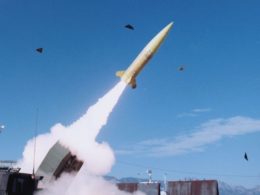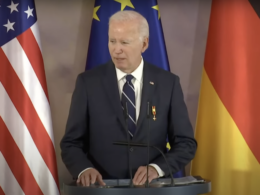US Defense Secretary Lloyd Austin stated on 6 September 2024 that no specific weapon would be a "game changer" for Ukraine and that allowing Ukrainian forces to use US-provided weapons for long-range strikes against Russian military targets within Russia would not change the status of the war.
"Austin is correct that no single weapon system will change the course of the war, but his comments ignore how weapon systems and their accompanying rules of engagement do affect Ukrainian capabilities and that changes in capabilities can change the course of wars," the Institute for the Study of war notes, analyzing his statement.
Austin's statement also ignores that the Ukrainian long-range strike capability requirement is necessary to disrupt Russian rear staging areas. He reiterated a Biden Administration talking point that since Russia has moved aircraft conducting glide bomb strikes out of range of US-provided ATACMS missiles
, it somehow renders Ukraine's request to use ATACMS in Russian territory against hundreds of known stationary military objects moot. On the contrary, this fact indicates that had Ukraine used ATACMS missiles earlier, it could have successfully destroyed a significant portion of Russian aviation, a task which now would require even more long-range weapons.
ISW has previously noted there are at least 209 of 245 known Russian military objects in range of ATACMS that are not air bases and not within range of US-provided HIMARS that the US does allow Ukraine to use in Russia under limited circumstances.
Currently, most of Ukraine's long-range strike capabilities come from domestically produced long-range drones, which Ukraine cannot use to cause the same level of damage as long-range missiles due to drone payload limitations. Russian forces can also more easily harden facilities against Ukrainian drones than Western-provided missiles, ISW notes.
As indicates the recent deloyment of new jet drones Palianytsia, Ukraine has begun to produce and successfully field long-range precision weapons with payloads more comparable to Western-provided long-range missiles but currently lacks
the quantity of these domestically produced systems to significantly threaten Russian military targets.
ISW has assessed at length that long-range strikes against Russian military targets within Russia would degrade Russia's ability to leverage sanctuary space in Russia for offensive operations in Ukraine and place significant operational pressures on the deployment of Russian air defense, electronic warfare (EW), logistics, command and control (C2), and military support assets.
Russia, on the contrary, continues to actively expand its ability to maintain deep precision strikes against Ukraine. It has recently procured a new batches of ballistic missiles from Iran and North Korea,
maintaing also its own missile production.
Ukraine has consistently urged its Western allies to lift restrictions on long-range strikes, arguing that it needs to counter ongoing Russian attacks and protect its civilian population. President Zelenskyy has emphasized that Ukraine should be allowed to strike Russian military targets, such as airfields, logistics hubs, and missile launch sites, which are used to launch attacks against Ukrainian cities. These requests include using advanced long-range systems like ATACMS and similar Western-supplied missiles, which could reach targets deep within Russian territory. Such strikes, Ukraine believes, would not only prevent further attacks but also potentially pressure Russia into seeking a peaceful resolution of the war.
However, the US and other Western nations remain cautious about these requests. Despite successful Ukrainian operations like the incursion in Russia's Kursk region a numerous strikes on Russian territory with Ukrainian drones, the US has maintained restrictions on using Western-provided weapons for deep strikes inside Russia, effectively limiting Ukrainian capacities.
Related:
- US and Ukraine collaborate on developing alternatives to Soviet-era air-defense systems
- Why did Ukraine reshuffle half its government amid war?
- US new military aid package for Ukraine includes ammunition for artillery and air defense
- Finland and Estonia say Ukraine should be allowed to attack targets inside Russia with Western weapons
- US “alarmed” by Iranian missile transfer to Russia
- Lithuania allocates EUR 10 million for the production of the Ukrainian “Palianytsia” jet drones to facilitate attacks on Russian territory





